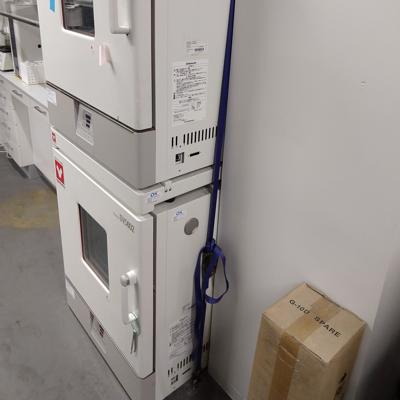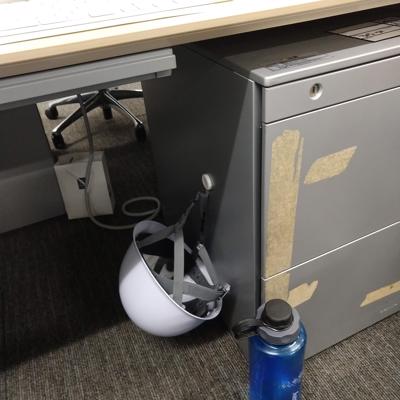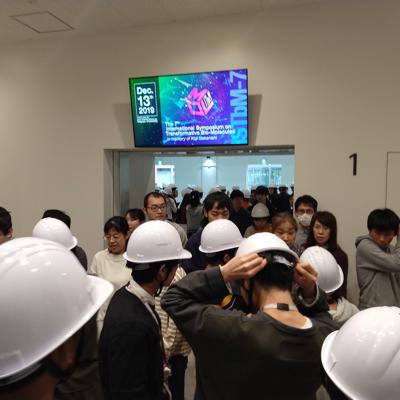Miklos & Tori's Japan Adventures
Earthquakes are very common in Japan. In fact, they get 1,500 per year!
This is something we thought about in terms of our own apartment. We worked on alleviating earthquake damage in our apartment by not getting high pieces of furniture (shelves and such) that could fall on you. Some of the taller organizers we have are made from plastic and are held in place by tension rods, so they shouldn't fall over, and if they did they would not cause a lot of damage.
If there ever is a strong earthquake that we feel while we are home, we know where we need to go to evacuate. In our case, it is the high school sport's field at the end of our street. So far we have not dealt with any earthquakes, at least none that we felt, here in Nagoya.
However, what would we do if an earthquake hits at work? Tori to date has not had any earthquake drill practices, but more than likely she would probably follow the lead of her supervisor to take the students to the closest evacuation spot. Miklos, on the other hand, works in a chemistry lab with a lot of hazardous chemicals and heavy equipment and machinery. Recently, ITBM held an earthquake drill, which this post will outline along with some standard safety precautions that lab is currently taking.
Making a chemistry lab earthquake proof is not particularly easy: Lots of fragile glassware, hazardous chemicals, etc. The first obvious
Victoria Robkis
49 chapters
16 Apr 2020
Earthquake proof labs
October 29, 2019
|
ITbM, Nagoya
Earthquakes are very common in Japan. In fact, they get 1,500 per year!
This is something we thought about in terms of our own apartment. We worked on alleviating earthquake damage in our apartment by not getting high pieces of furniture (shelves and such) that could fall on you. Some of the taller organizers we have are made from plastic and are held in place by tension rods, so they shouldn't fall over, and if they did they would not cause a lot of damage.
If there ever is a strong earthquake that we feel while we are home, we know where we need to go to evacuate. In our case, it is the high school sport's field at the end of our street. So far we have not dealt with any earthquakes, at least none that we felt, here in Nagoya.
However, what would we do if an earthquake hits at work? Tori to date has not had any earthquake drill practices, but more than likely she would probably follow the lead of her supervisor to take the students to the closest evacuation spot. Miklos, on the other hand, works in a chemistry lab with a lot of hazardous chemicals and heavy equipment and machinery. Recently, ITBM held an earthquake drill, which this post will outline along with some standard safety precautions that lab is currently taking.
Making a chemistry lab earthquake proof is not particularly easy: Lots of fragile glassware, hazardous chemicals, etc. The first obvious






difference, from a chemistry lab in Japan and elsewhere around the world, is that chemicals are not sitting on shelves in Japan. Everything is in a closet, most of which have sliding doors and pull out drawers that are close to the ground. This is a deliberate safety precaution to prevent chemicals and glassware from falling and shattering on the ground. Bigger pieces of equipment are either strapped down, or fixated with tension rods (see pictures).
For staff's personal safety, a hard hat is stored under everyone's desk. In case of an earthquake, staff has to take cover under the desk, put on the hard hat and then evacuate once the shaking stopped. Last Additionally, staff has a little card that would be handed to evacuation personal, so they can see who is accounted for. Staff would also get a follow-up email where they would indicate if they are safe and injured Tuesday all staff took part in an earthquake drill (you can see more pictures below). Altogether, it was a pretty intense drill!
1.
The BIG Move
2.
The First Week
3.
October 1st -- The day everything happened
4.
So Many ROAD BLOCKS
5.
Cool Restaurants
6.
Move In
7.
The old, temporary apartment
8.
Tsurumai Park & Vegan Fest
9.
The day of many deliveries
10.
Being vegetarian in Japan
11.
We're going to the OLYMPICS
12.
Earthquake proof labs
13.
🎃Happy Halloween 🎃
14.
Kyoto Trip
15.
11/11 ... Pocky Day
16.
Yakitori time
17.
Westgate
18.
Peter Pladman's Visit
19.
Our Hike from Magome to Tsumago
20.
Shirakawago & Takayama
21.
Fire Ramen in Kyoto
22.
It's Beginning to Look a lot like Christmas
23.
Nagoya's Cultural Night
24.
🎄Merry Christmas🎄
25.
Christmas Lights
26.
Sapporo Snow Festival
27.
Day trip to Hamamatsu
28.
Tori's B-day Trip
29.
Himeji
30.
Pumpkin Painting
31.
Flavored Soy Milks
32.
Halloween
33.
Kobe
34.
Okazaki
35.
Miklos's JLPT
36.
Rock Climbing
37.
Christmas & New Years
38.
The Site of Reversible Destiny
39.
Nabana no Sato
40.
Skiing & Snowboarding
41.
Visiting Snow Monkeys in Japan
42.
Gifu University
43.
Golden Week
44.
The Sweetest Hubby
45.
Pink Moss Galore
46.
Ukai - Cormorant Fishing
47.
Inuyama
48.
Rice Fields and Sun Flowers
49.
Visiting Northern Japan (Tohoku)
Share your travel adventures like this!
Create your own travel blog in one step
Share with friends and family to follow your journey
Easy set up, no technical knowledge needed and unlimited storage!